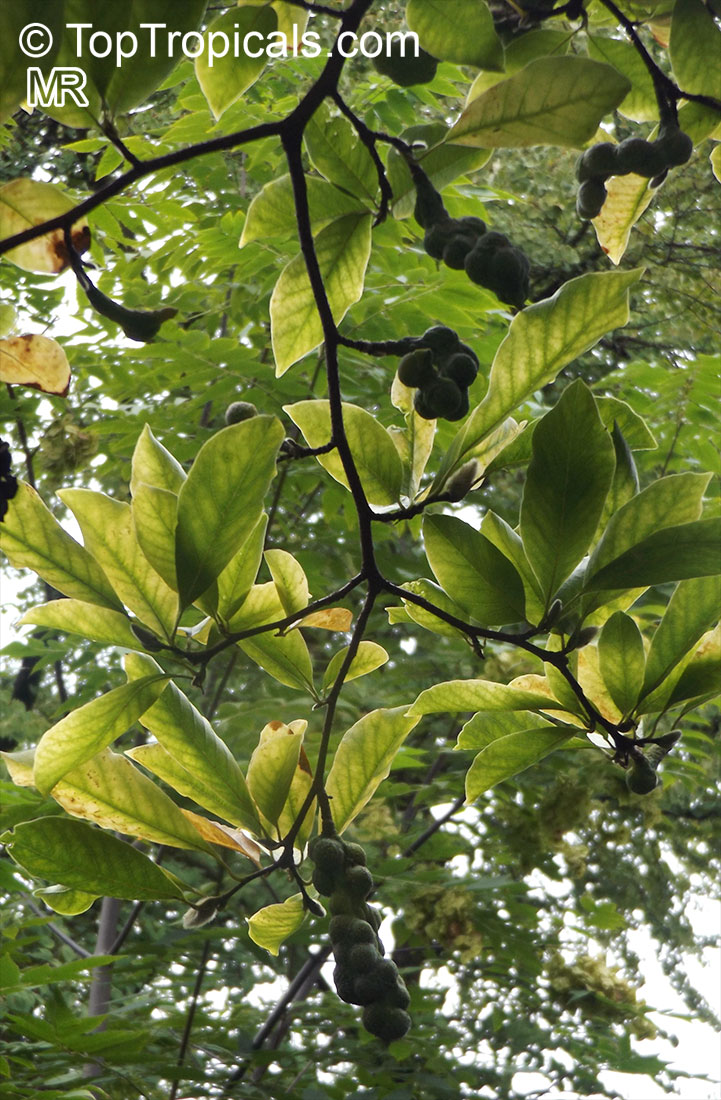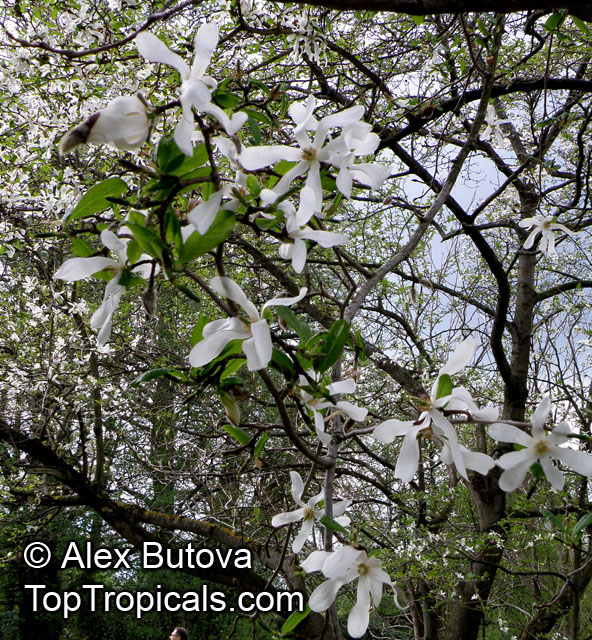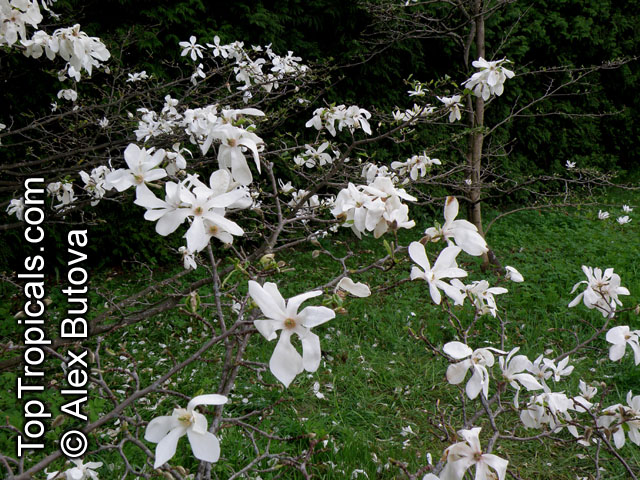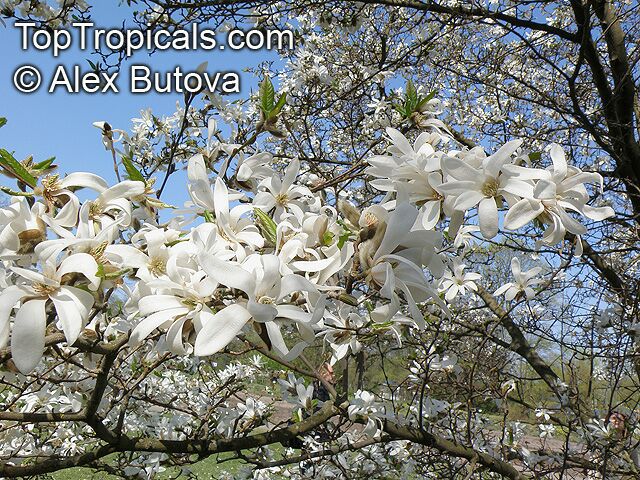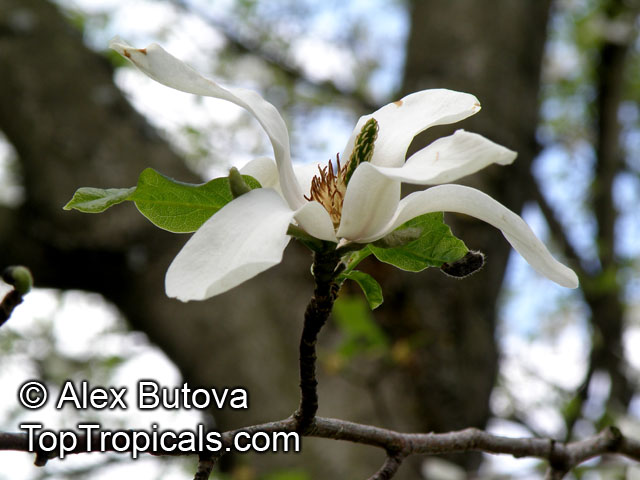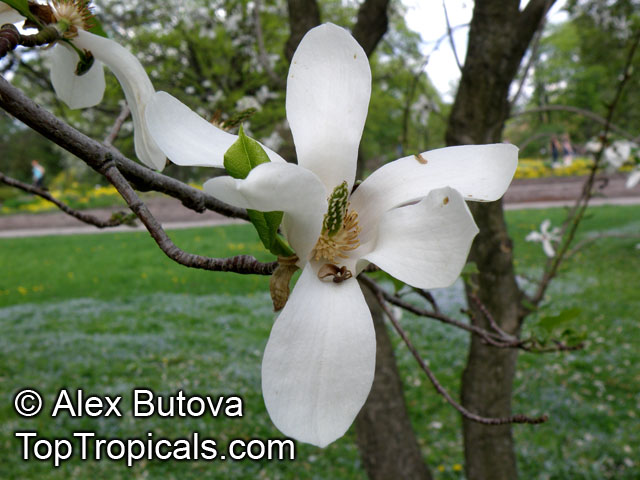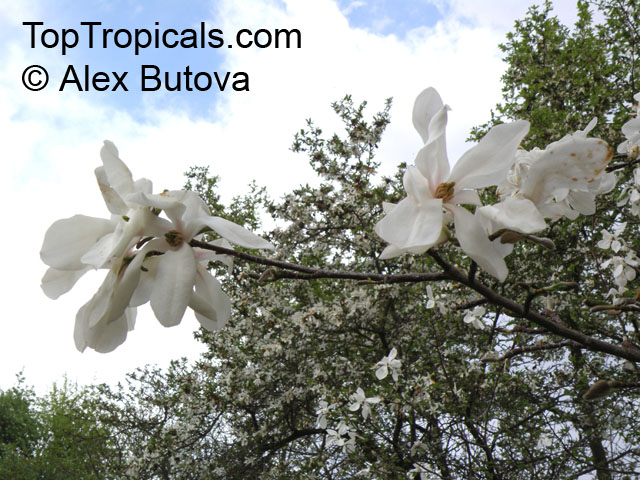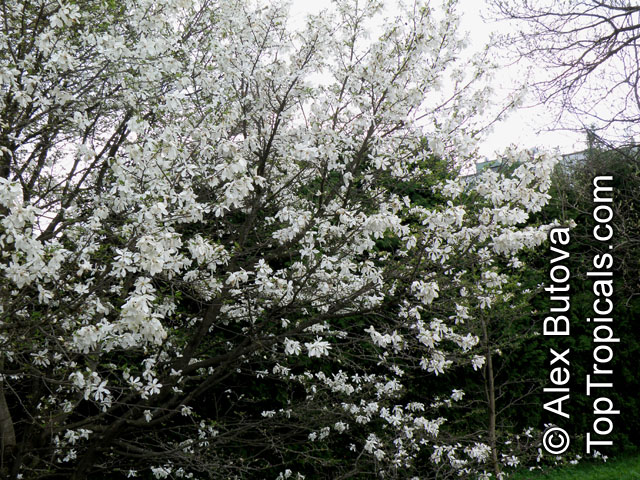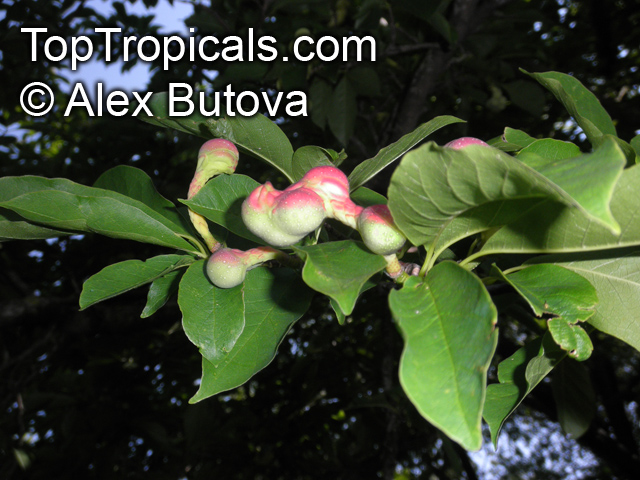Magnolia kobus (Kobushi Magnolia)
Top Tropicals Plant Encyclopedia
Botanical name: Magnolia kobus
Common name: Kobushi Magnolia
Family: Magnoliaceae
Origin: Japan









A small to medium deciduous tree or large shrub that is native to forest areas in Japan. As a tree, it is pyramidal when young, maturing to a spreading, dense, rounded form. It typically grows slowly to as much as 25-30' over time with a similar to slightly larger spread. It is noted for its late winter to early spring bloom of goblet-shaped to cup-shaped, fragrant, often pink-tinged, white flowers (each to 4" across) which open in March before the foliage emerges. Obovate, aromatic, dark green leaves (3-6" long) are attractive throughout the growing season but produce little yellowish-brown fall color. Trees flower poorly when young, and may need as much as 25 years before reaching best flowering status. Red seeds form in pods (to 3" long) that split open in fall. Seeds are attractive to birds. Kobus magnolia is similar to Star Magnolia (Magnolia stellata) except larger. Specific epithet comes from the Japanese word "kobushi" meaning fist, in reference to flower bud shape resembling a small fist.
Best grown in moist, organically rich, well-drained loams in full sun to part shade. Generally intolerant of soil extremes (dry or wet). Best sited in a location protected from high winds, but generally avoid southern exposures in full sun where the buds may be induced to open too early in late winter. Among magnolias, this species is one of the earliest to bloom in spring.
Magnolia kobus var. borealis is the hardiest of all magnolias.
Propagate from cuttings.
Similar plants: Magnolia kobus (Kobushi Magnolia)
- Magnolia acuminata (Cucumber Tree)
- Magnolia champaca (Joy Perfume Tree)
- Magnolia coco (Dwarf Magnolia)
- Magnolia cylindrica (Huang-shan Magnolia )
- Magnolia delavayi (Chinese Evergreen Magnolia )
- Magnolia doltsopa (Sweet Michelia)
- Magnolia figo (Banana Magnolia)
- Magnolia floribunda (Magnolia)
- Magnolia grandiflora (Southern Magnolia)
- Magnolia lacei (White Michelia)
